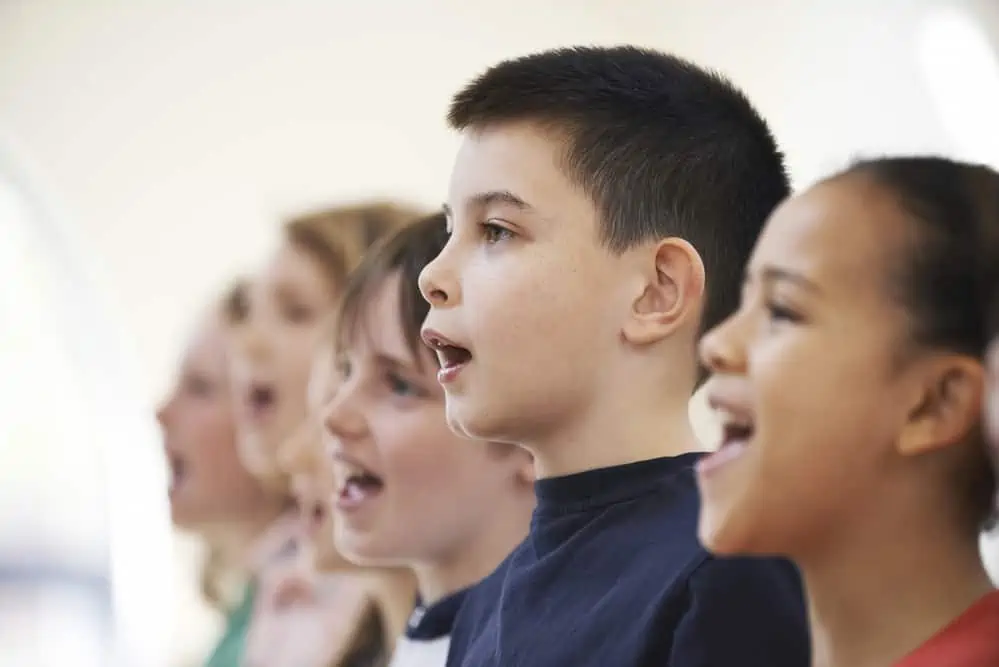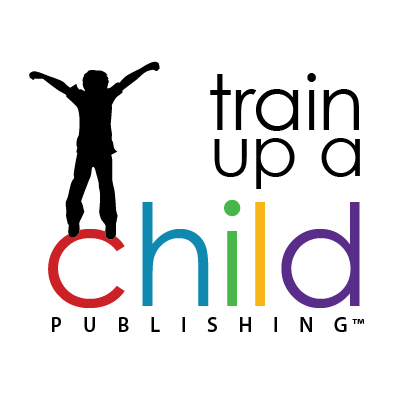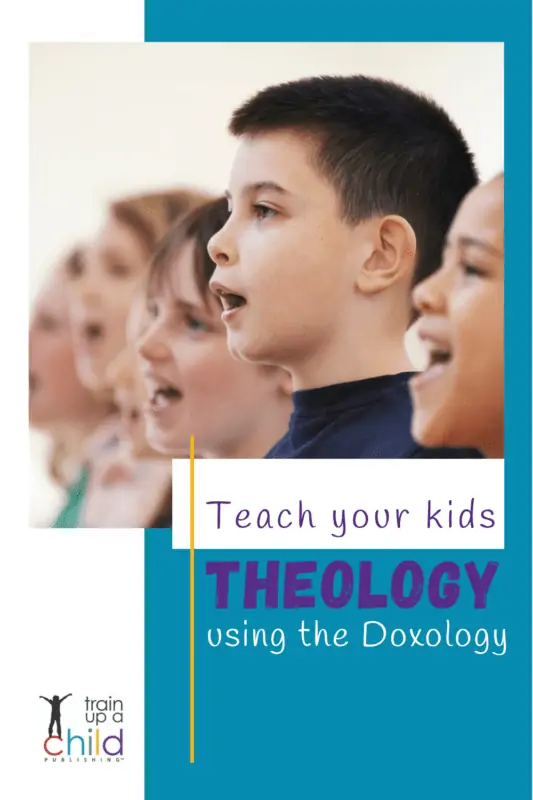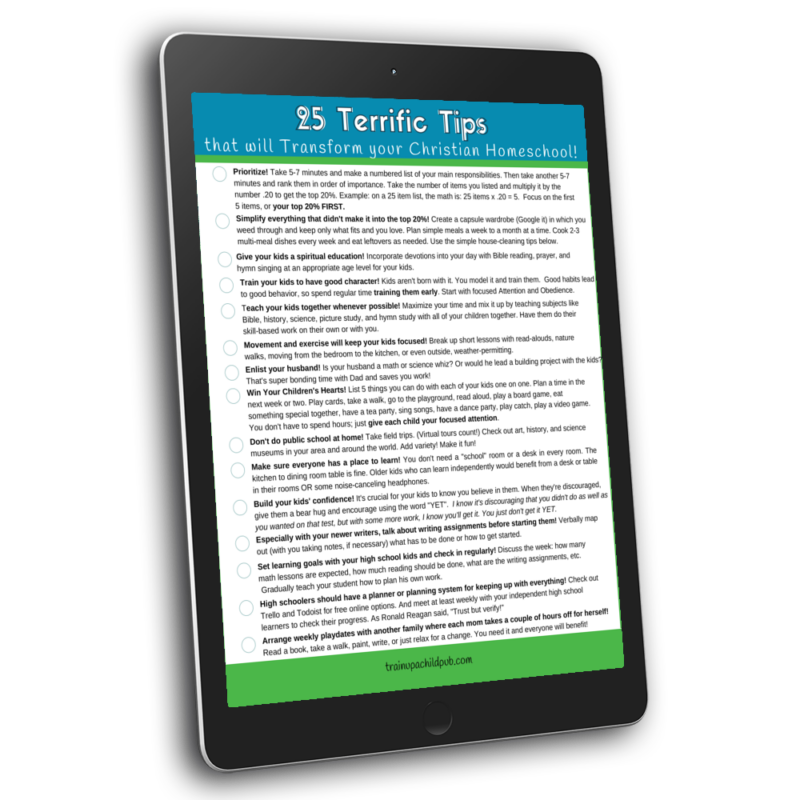Teach your kids theology using The Doxology

Whatever happened to the truth?! All too often today the predominant worldview is that absolute truth is a fairy tale. The general attitude is that morals are relative. That you should decide what’s best for you and do that. And while you’re at it, you’d better not judge anyone else’s “truth,’ because then you’re labeled a “hater.” So it’s more important than ever to give your kids a rock-solid spiritual foundation and teach your kids theology. And one of the easiest ways to teach theology is using the Doxology.
There are actually many ways you can teach your kids theology. Kids learn theology when you pray with them and when you read and discuss the Bible together. And they learn it when you listen to what my 2 and 3-year-old grandsons call “God songs,” that is, the New City Catechism put to music on the New City Catechism mobile app. You also teach your kids theology when you sing and study hymns together. And in this post, I want to give you the simplest hymn ever to help you teach theology to your kids: the Doxology.
You might have sung this hymn every Sunday for 20 years, probably at the end of your service: 🎵 Praise God from Whom all blessings flow…🎵 But have you taught it to your kids? Do they know what it means? Teaching your kids the Doxology and singing it regularly is a fantastic way to teach your kids theology.
What I love most about the Doxology is that it’s a simple, easily memorized hymn of praise to God. These four little lines are an expression of joy and thanksgiving for the glory of God and His works in creation, redemption, and sanctification. So this short hymn packs in a lot of theology.
First, the Lyrics of the Doxology
1. Praise God from Whom all blessings flow.
2. Praise Him all creatures here below.
3. Praise Him above ye heavenly host.
4. Praise Father, Son, and Holy Ghost. Amen.
And here’s a video of the Doxology so you and your kids can hear it. This is sung by The Lighter Side Movement choir from the Philipines.
History of the Doxology
The word “doxology” comes from Greek: δοξολογία meaning “praise to God”.
Thomas Ken, an Anglican Bishop, first penned the words to this song in 1624, although the melody is even older than that! Interestingly, although the Bible talks about “addressing one another in psalms, hymns, and spiritual songs” (Eph. 5:19), in the Catholic Church at that time the congregation did not sing. In fact, only trained singers sang. And they sang in Latin.
It was the Protestant Reformation that brought back congregational singing in the language of the people. I can’t imagine going to church without corporate worship; can you?
How to teach your kids theology using the Doxology
If you have daily devotions before starting homeschooling you could begin them by singing the Doxology while you’re learning it. Remember that you’re teaching your kids theology by teaching them what the lyrics mean in light of what the Bible says. Then they will think about the meaning more deeply as they sing this hymn regularly. (After you’re ready to move on to another hymn, you could sing the Doxology before a meal, after devotions, or any other time you would like to.)
Back to teaching the Doxology. Before you begin, write the words for your kids before starting. You can use paper, a poster, or a whiteboard so your readers can see the words as they learn the hymn.
After you sing it together for the first time, you can talk about this little hymn for devotions that day and for the rest of the week if you want. So here are some day-by-day instructions:
Day 1: Introduce the Doxology by talking about praising God
- Introduce the Doxology as a short hymn you’re going to be singing to start your devotions each day for a few weeks.
- Then say a few words from the history of the Doxology written above.
- Read through the lyrics out loud together.
- After that, listen to the YouTube video above as the Lighter Side Movement choir sings through the Doxology.
- Then, sing it together yourselves. If you aren’t sure of the tune you could play the video again and sing with it.
- After singing, you can start discussing it line by line as suggested below.
Teach your kids theology using the Doxology by starting with its theme: Praising God
Many times in the Bible we are commanded to praise God. Since each line in the hymn talks about praising God, we’ll start with that concept. When we are learning something new, I always like to hear what the kids know or think first, so I ask questions:
Questions:
- What does it mean to praise something or someone? (say good things about something or someone)
- Why do we praise God? (Kids might say, “because He is good, because He made us, or because He created the world…”)
- What does the Bible say about Praising God? Can you think of any verses in the Bible that talk about praising God?
- Extend the study by having your older kids find an appropriate number of verses that direct us to praise God. (But for your convenience, here’s a list of 100 verses about praising God.)
Talking points:
- When we praise God, we say good things about Who He is, about His attributes and character as an expression of our respect and worship. Remember to stress that there is no one higher in authority than God. He made the universe and everything in it!
- You could learn some of the attributes of God that we praise Him for. My example list starts with three attributes that begin with the “omni” prefix, which means “all.”
- Omnipotence (He is all-powerful.)
- Omnipresence (He is present everywhere.)
- Omniscience (He is aware of all things, knows all things.)
- Immutable (He never changes.)
- Infinite (God is, God was, and God will always be. He is self-existing without origin.)
- Talk about the fact that when we praise God, we have our minds on Him, not on ourselves. This is “good medicine” for our souls and attitudes and helps us feel better when we are downhearted, worried, or fearful.
- Again, one of the most important aspects of praising God is realizing that He is above all, and certainly above us. After all, the Bible starts with “In the beginning, God…” instead of “In the beginning, [insert your or your kids’ names], right?
Extend the Study
- As your older children are studying the Bible on their own, have them make a list of God’s attributes in their journals with the Scripture reference.
- Can you think of other names the Bible uses for God or Jesus? (Examples: a Mighty Fortress, Our Shield and Defender, Our Healer, the Unblemished Lamb, the Good Shepherd…)
-
- Have your older students start a list of metaphors such as the ones above that the Bible uses for God, Jesus, and the Holy Spirit. Make sure they list the phrase and the Scripture reference. (Note: a simple definition for metaphor is comparing two seemingly unlike things without using “like” or “as”. Example: “The name of the Lord is a strong tower.”)
-
- Additionally, you could talk about or have your older students make a list of the Names of God, which embody His attributes. Have them list the name, what it means, and where it’s found in Scripture.
Day 2: Line 1 – Praise God from Whom all blessings flow.
Questions:
- Can you put this line in your own words?
- Why are the words “God” and “Whom” capitalized? (We always capitalize the word “God” out of respect when we are referring to the One True God. We capitalize “Whom” because it is a pronoun referring to “God”.)
Talking points:
- All blessings are from God! If your kids are old enough, have them look up and read these verses one at a time. Have each reader explain what the verse means (or what we should do) and how the verse relates to the first line of the Doxology.
- Ephesians 1:3 “Blessed be the God and Father of our Lord Jesus Christ, who has blessed us in Christ with every spiritual blessing in the heavenly places.” (how it relates – all blessings are from God)
- Psalm 103:1 “Bless the Lord, O my soul, and all that is within me, bless his holy name!” (it relates to the directive we have to bless or praise the Lord)
- Isaiah 25:1: “O Lord, you are my God; I will exalt you; I will praise your name, for you have done wonderful things, plans formed of old, faithful and sure.” (We are to praise the Lord)
- James 1:17: “Every good and perfect gift is from above, coming down from the Father of lights.” (All blessings come from God)
Day 3: Line 2 – Praise Him all creatures here below.
Questions:
- Who is told to praise God in this line of the Doxology? (all Creation)
- What are creatures?
- What does “Here below” mean? (on Earth)
Talking points:
- “Creature” means “that which is created.” We, as part of the created world, are called to praise our Creator. God is always above anything that He (or mankind) created.
- Do we sometimes praise or worship that which is created instead of the Creator Himself? How? (We become too fond of our possessions, the way we and others look outwardly, our time, our comfort, our plans…)
- Can you give an example from the Bible about people worshiping creation over the Creator? (Ex. 2)
- Read Psalm 148 7-13 and ask — so what else here on Earth praises the Lord?
- For older children, have them find examples in the Bible of created things (other than people) worshiping the Creator. (Hint: Psalm 148 and Luke 19:40)
Day 4: Line 3 – Praise Him above ye heavenly host.
Question:
- What does the psalmist mean to praise God “above” the heavenly host?
- What do you think the heavenly host is?
Talking points:
- Read Psalm 148: 1-6. Any hints there about “heavenly host”?
- Angels are part of the Heavenly host. This line tells us that we are to praise God above the angels and the planets and stars. The angels, planets, and stars were all created by God. And remember that the Creator is always honored above the created.
- So when people get caught up in the study of angels or in astrology, are they “praising God above the heavenly host”? How could these practices be dishonoring to God?
Day 5: Line 5 – Praise Father, Son, and Holy Ghost. Amen.
Questions:
- What is the Trinity?
- Who are the Father, the Son, and the Holy Ghost? (God is the Father, Jesus is the Son, and the Holy Ghost, also called the Holy Spirit, is the Comforter Who comes to live in our hearts when we are saved.)
- And do you know what it means when we say “Amen” after we pray? (It means, “so be it” or “I’m in agreement”)
Talking points:
- Okay, here’s the tough part to explain, especially to children. The Trinity. The Trinity is made up of God the Father, Jesus the Son, and the Holy Spirit, Who lives inside believers. Each “Person” is totally separate, yet fully and completely God.
- The concept of the Trinity is too ‘high’ for us to totally understand, and that’s okay. (I would stay away from analogies that are not theologically correct like using an apple, water, or egg…it’s just going to be more confusing later. Read more here.)
- I recommend you teach your kids catechism questions and answers. They won’t fully understand the answers, but they will have an answer. This is question #26 and its answer from the Westminster Shorter Catechism:
- Q. How many persons are in the Godhead?
- A. There are three persons in the Godhead: the Father, the Son, and the Holy Ghost; and these three are one God, the same in substance, equal in power and glory.
- For younger children, you could use the New City Catechism. This is question #3 and its answer:
- Q. How many persons are there in God?
- A. There are three persons in one God: the Father, the Son, and the Holy Spirit
- Because all three are distinct “persons” yet fully God, they are each worthy of our praise.
I hope and pray that this gives you a place to easily start teaching theology to your kids.
As part of bringing your kids’ homeschooling to life, start teaching your kids theology using the Doxology!
![]()



The Doxology is one of about 3 openers I start the homeschool day with. We start standing and then, with 1. The Pledge of Allegiance, 2. Doxolgy , Glory Be, or America The Beautiful. 3. Boy Scout law 4. Bouncing a racket ball from hand to hand to cross the midline/or similar activity. Then we sit down to work. :). Twin boys are the best!
Yay! So glad to hear that the Doxology is one of the things you do to start your homeschool day. I’m sure your twins are a lot of fun, and it sounds as if you enjoy homeschooling them! Thanks for sharing!